Observational and Physical Classification of Supernovae#
Notes partially following Observational and Physical Classification of Supernovae by Avishay Gal-Yam.
Wednesday, Apr. 16, 2025
astrophysics of stars and planets - spring 2025 - university of arizona, steward observatory
Today’s Agenda#
Announcements - SCS Survey due May 7 (2m)
Reading Overview/Key Points (10m)
ICA 25 - the Phillips relation and measuring \(H_0\) (30m)
Debrief + Share Results (5m)
Spectral Classification#
We can recall our definition for Supernovae based on their light curve shapes:
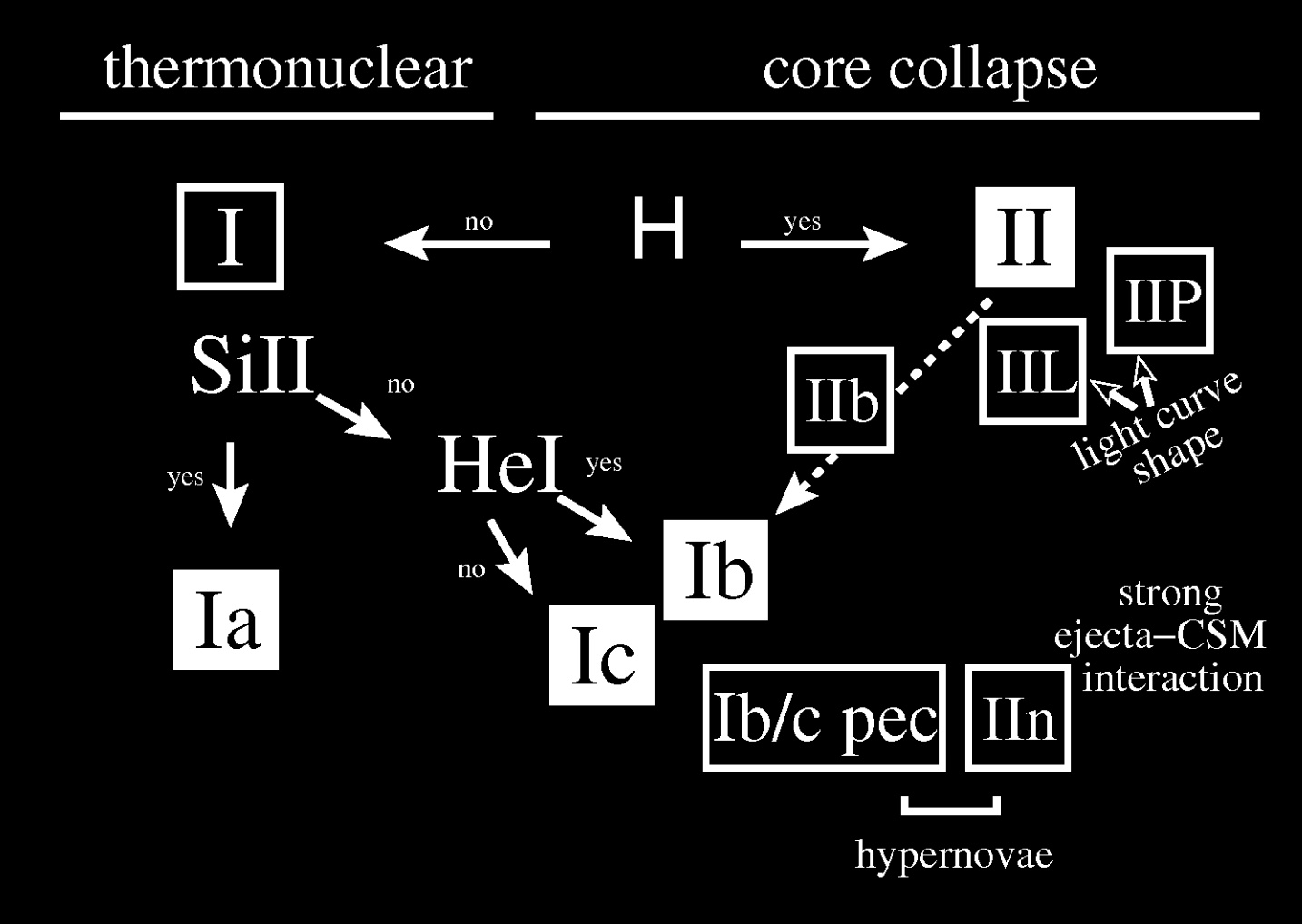
Classification of supernovae, based on their spectra and lightcurve shapes. The main supernova types are shown as black squares. Figure from Turatto (2003, LNP 598, 21).
Below we will look at examples for each of the sub-classes in those black squares.
Regular Type Ia supernovae - white dwarf explosions#
Early Time Spectra
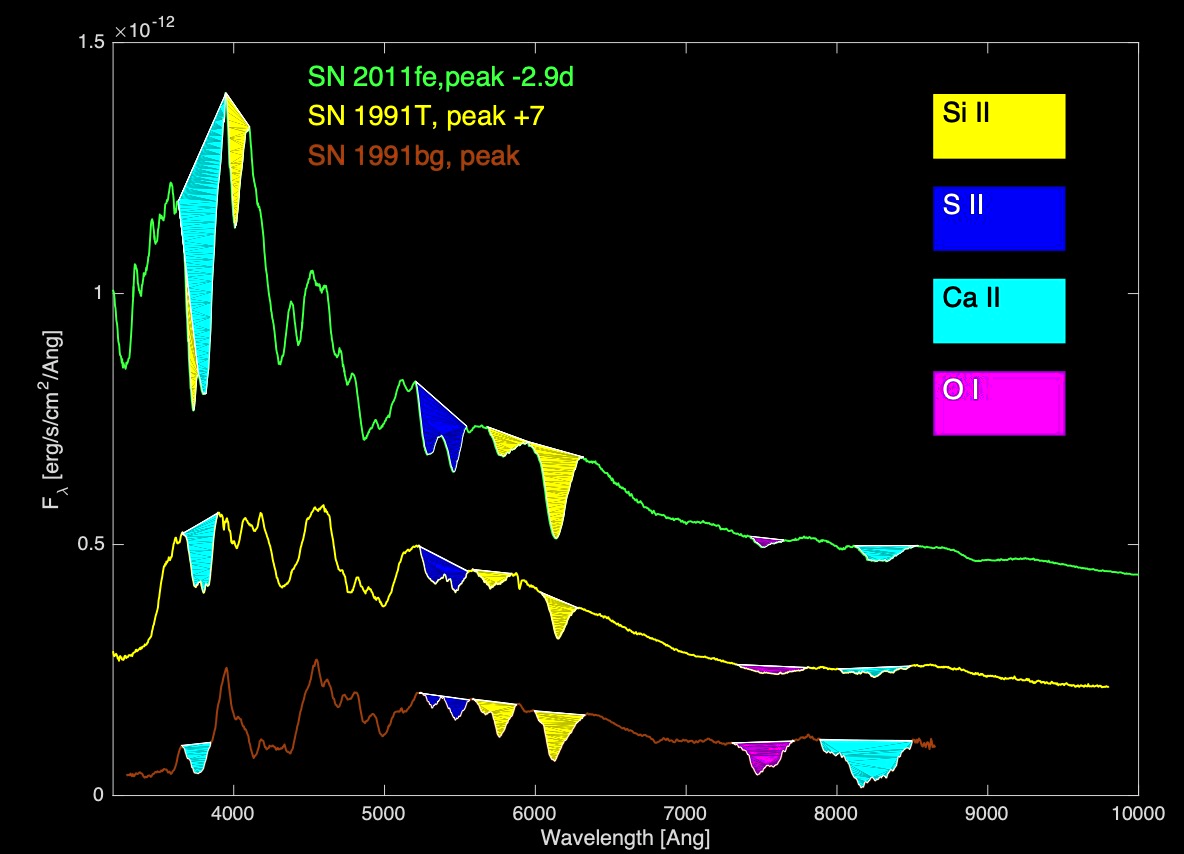
An early time spectrum of SN2011fe (top), a normal Type Ia supernova, obtained 2.9 days prior to peak B-band magnitude. Credit: Mazzali et al. (2014).
Observation 16
The spectrum does not show any lines of hydrogen or helium.
dominated by absorption lines from intermediate-mass elements, especially SiII absorption around 6100 \(\rm{\mathring A}\), large Si/O depth ratio.
estimated expansion velocities of 11,000 km s\(^{-1}\), typical peak magnitudes of \(M_B\) = −19.1 mag.
Late Time (Nebular) Spectra
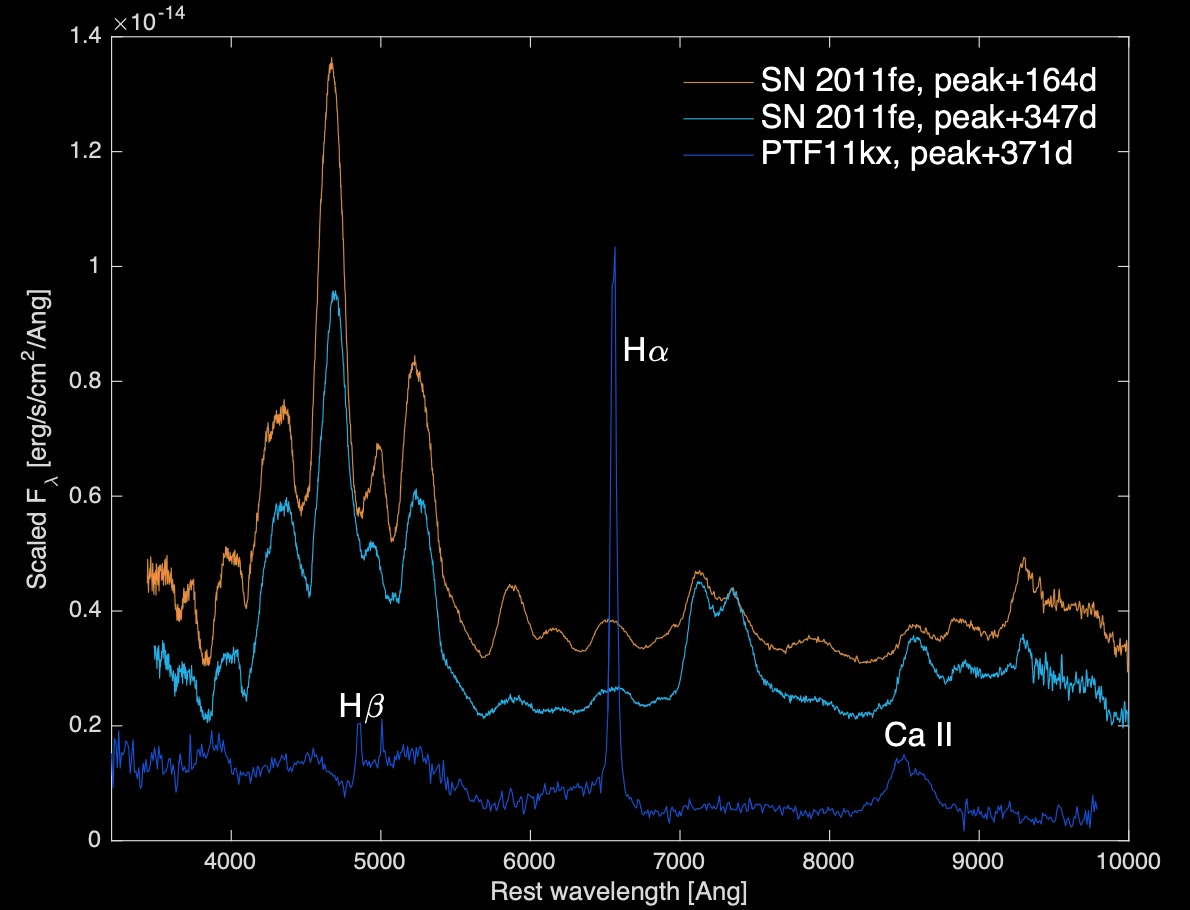
Late-time (nebular) spectra of the normal Type Ia SN 2011fe (from Mazzali et al. 2015) are dominated by strong lines of Fe-group element. SN Ia-CSM PTF11kx (Silverman et al. 2013b) are dominated by strong hydrogen Balmer lines, likely from the shocked CSM. Credit: Mazzali et al. (2015).
Regular Type Ib supernovae - hydrogen-poor massive star explosions#
Early Time Spectra
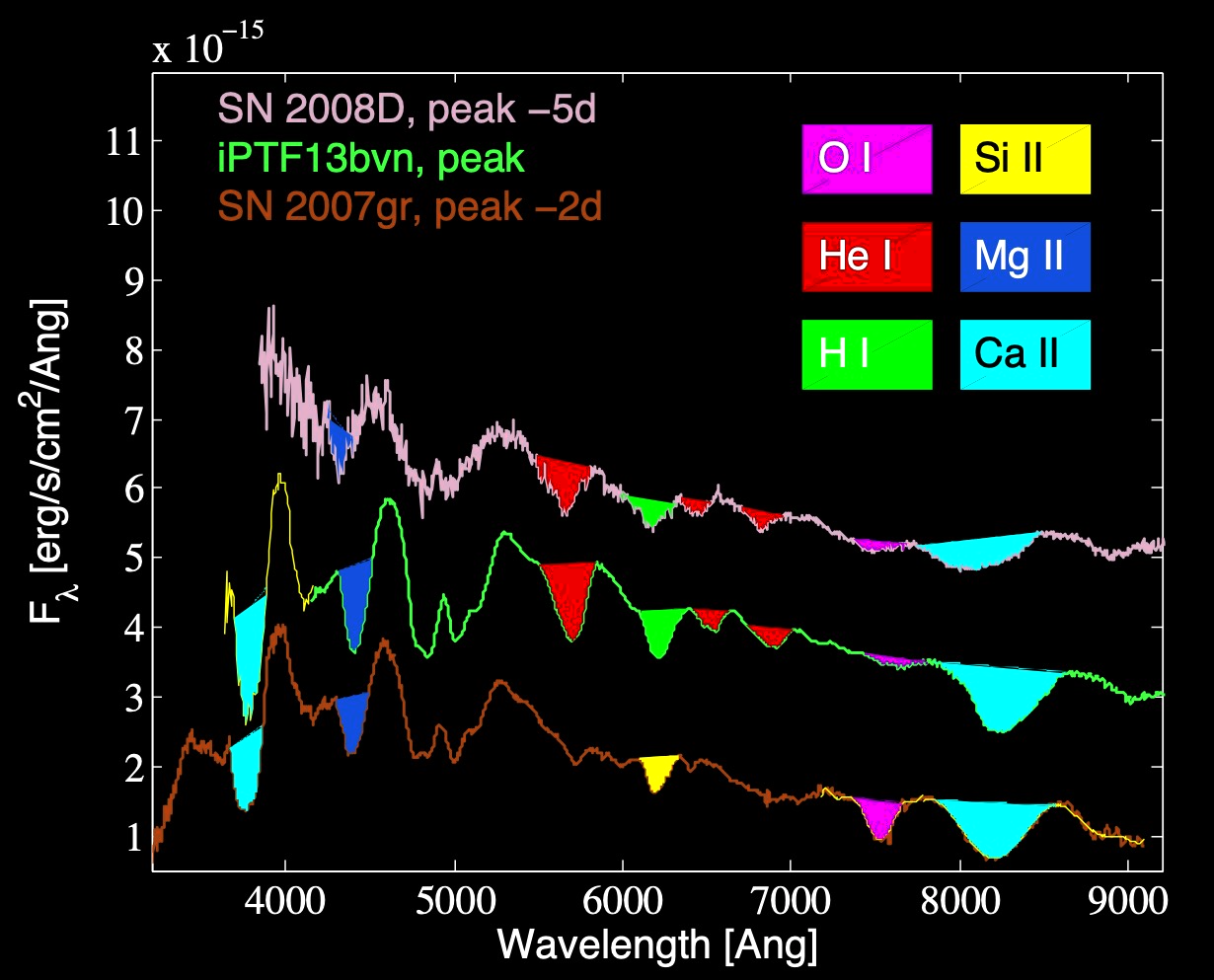
Spectra of events considered to be regular Type Ib SNe (top; SN 2008D from Modjaz et al. 2009 and iPTF13bvn from Cao et al. 2013) compared with a spectrum of a regular Type Ic SN (bottom) . Major absorption features are marked. Credit: Mazzali et al. (2015).
What is the difference between the top two spectra (Type Ib) and the bottom (Type Ic)
Observation 17
The spectrum shows hydrogen, but no strong helium features.
estimated expansion velocities of 9,000 to 10,000 km s\(^{-1}\), typical peak magnitudes of \(M_R\) = −17.9 mag.
Regular Type Ic supernovae - hydrogen-poor, helium-poor, massive star explosions#
Early Time Spectra
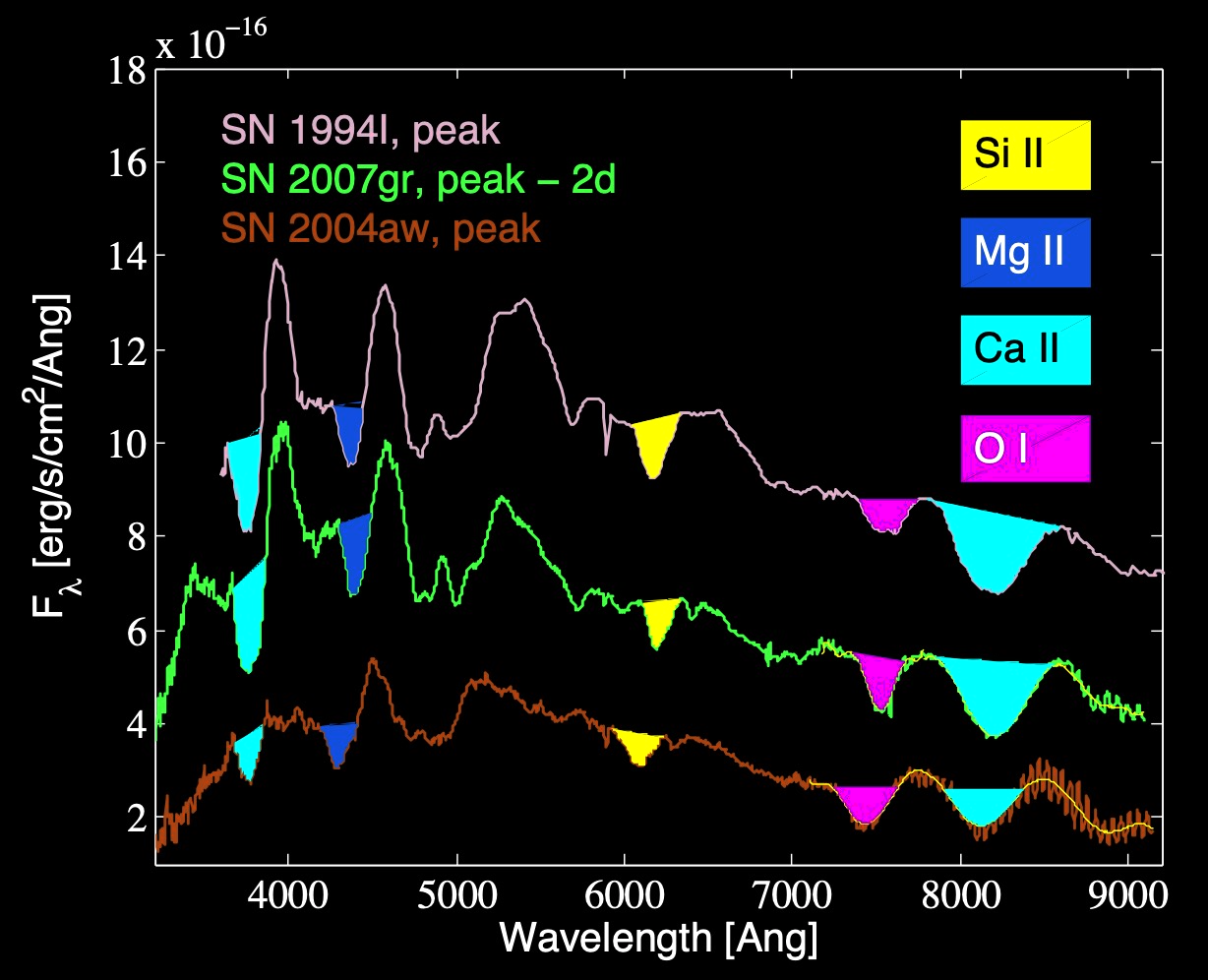
Spectra of events considered to be regular Type Ic SNe. Credit: Mazzali et al. (2015).
Observation 18
Si II absorption is detected, its strength with respect to other elements (most notably OI) is distinctively weaker than in SNe Ia.
estimated expansion velocities of 9,700\pm1,600 km s\(^{-1}\), typical peak magnitudes of \(M_R\) = −18.3 mag.
Regular Type II supernovae - hydrogen-rich massive star explosions#
Photospheric Phase Spectra
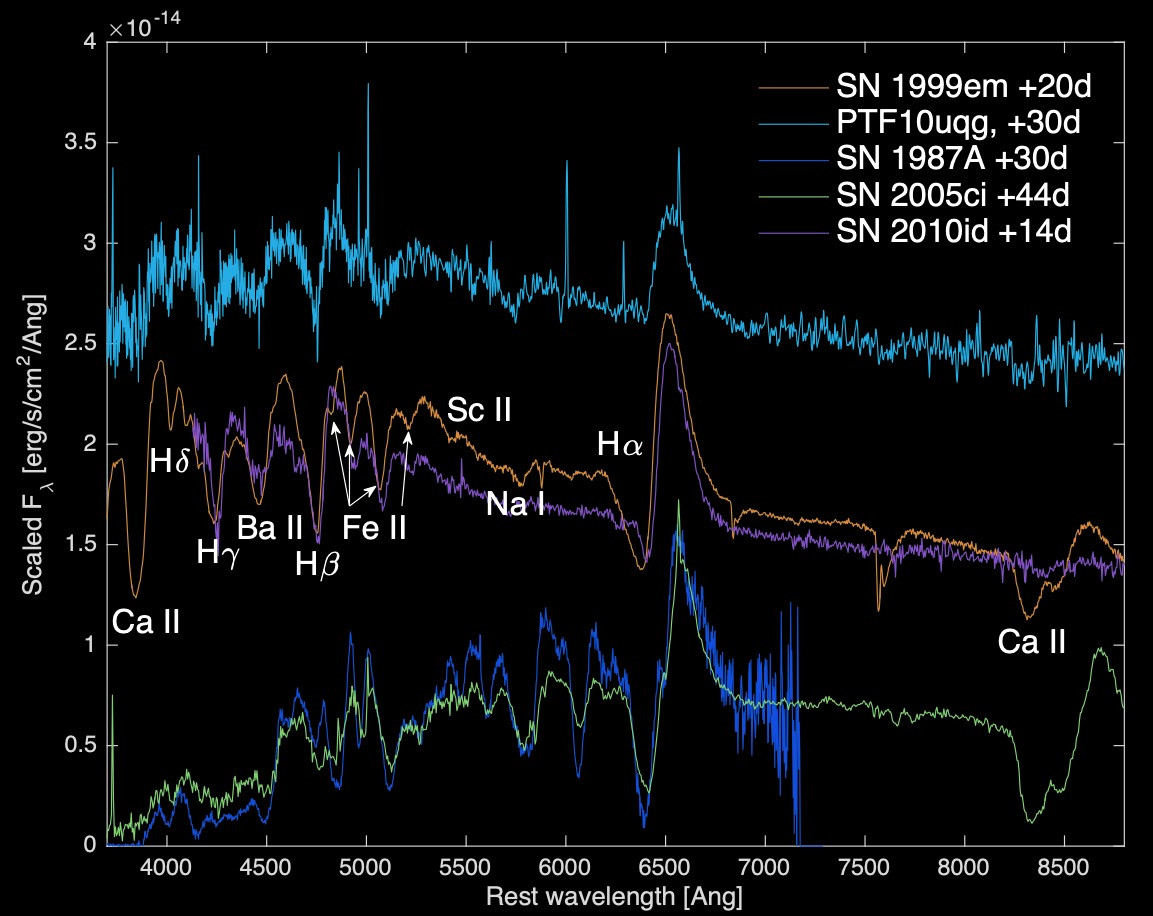
Spectroscopically regular SNe in the photospheric phase, epoch at which the spectrum can be broadly understood in terms of a (pseudo-)continuum, usually with discrete spectral features imprinted.
Observation 19
notable H-emission features
estimated expansion velocities of 9,600 km s\(^{-1}\), typical peak magnitudes of \(M_R\) = −17.4 mag.
In-Class Assignment 25#
In-Class Assignment 25 can be found here.


